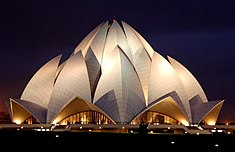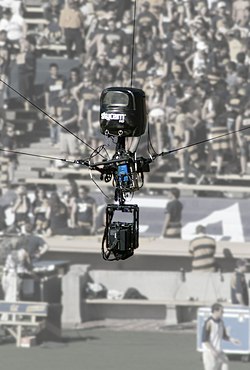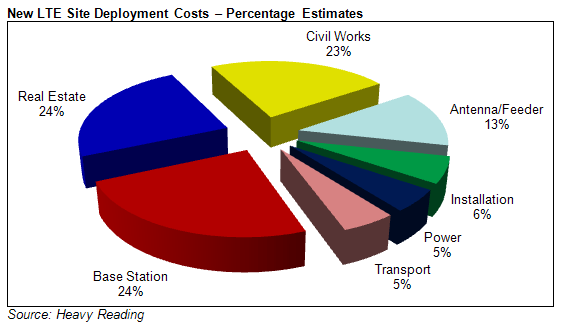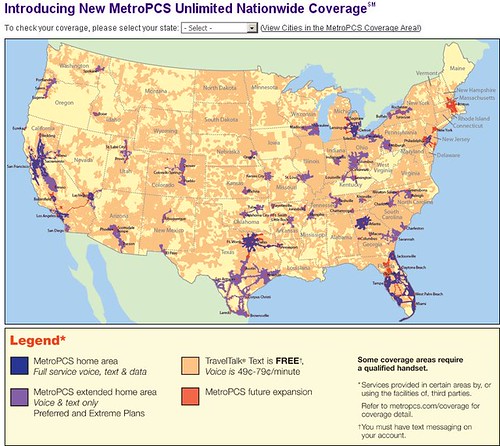Posted by Sam Churchill on January 12th, 2009  Alvarion will deploy Taiwan’s first mobile WiMAX network during the first half of 2009. Taiwanese provider VMAX Telecom will deploy equipment and services valued at more than $12 million (USD).
Alvarion will deploy Taiwan’s first mobile WiMAX network during the first half of 2009. Taiwanese provider VMAX Telecom will deploy equipment and services valued at more than $12 million (USD).
The first phase of the network will be built over the next 6 months in the Taoyuan and Hsinchu counties and will enable VMAX Telecom to provide mobile broadband to Northern Taiwan. Alvarion will provide planning, provisioning and network gear. Subscriber growth is expected to reach 500,000 in 5 years.
VMAX Telecom was awarded one of 6 WiMAX license by the National Communications Commission of Taiwan in July 2007. VMAX Telecom is a joint venture between Teco Electric and Vibo Telecom. The M-Taiwan program - a government initiative to accelerate WiMAX ecosystem development and create a nation-wide broadband network supports mobile broadband services.
Vibo Telecom is a 3G operator backed up by parent company the Kinpo-Compal Group. VMAX has also received financial backing from Intel Capital which has invested in over 30 WiMAX technology companies and service providers globally. Last year the Taiwan Ministry of Economic Affairs (MOEA) and Intel Taiwan agreed to jointly accelerate the commercial deployment of WiMAX in Taiwan.
The new network will provide personal broadband services targeting both businesses and homes through USB dongles and WiMAX embedded laptops.
 This deployment follows another large WiMAX win announced by Alvarion in late December. Linkem Spa, Italy’s leading wireless broadband service provider and nationwide WiMAX license holder, plans to deploy WiMAX across Italy using Alvarion’s 4Motion solution for the 3.5 GHz frequency band. Linkem holds WiMAX licenses in thirteen regions across Italy and plans to cover over 80% of the entire Italian population with high-speed broadband access and services by 2013.
This deployment follows another large WiMAX win announced by Alvarion in late December. Linkem Spa, Italy’s leading wireless broadband service provider and nationwide WiMAX license holder, plans to deploy WiMAX across Italy using Alvarion’s 4Motion solution for the 3.5 GHz frequency band. Linkem holds WiMAX licenses in thirteen regions across Italy and plans to cover over 80% of the entire Italian population with high-speed broadband access and services by 2013.
When Taiwanese telecoms regulator the National Communications Commission (NCC) issued six 2.5GHz WiMAX licenses in July 2007, it looked likely that WiMAX would play a significant role in the country’s broadband market. But the landscape has changed drastically in the intervening 14 months, says Tony Brown in Telecoms.com.
The companies were given 18 months to build WiMax service networks and are required to launch their commercial operation within six months of completing the construction. Global Mobile, Vmax Telecom and First International Telecom won licenses for northern Taiwan, while Far EasTone Telecommunications, Tatung and Vastar Cable TV System won licenses for the south.
- First International Telecom (Fitel), confessed that its financial problems could jeopardize its prospects of even making it to a commercial launch unless it can attract new investment.
- Global Mobile had NT$1.14 million in capital when it last published company figures. If it misses the deadline to hit the capital minimum, it could lose its license after a three-month grace period.
- Vastar has applied to the NCC for an extension to meet capitalization requirements and First International announced in September a plan to raise NT$3 billion by issuing 250 million common shares via private placement.
- Far EasTone, Tatung and Vmax said earlier that they have obtained sufficient capital to guarantee their ability to carry out their WiMAX plans.
Other big markets for WiMAX gear include South America, India, China and Europe.
To date, Alvarion has delivered more than $100 million worth of WiMAX equipment for networks deployed throughout Latin America, primarily in Argentina, Bolivia, Brazil, Chile, Costa Rica, Ecuador, El Salvador, Guatemala, Mexico, Paraguay, Peru and Venezuela.
 Latin America has a population of 550 million with a broadband penetration below 15%. Brazil, for example, only has a 3% penetration rate, and over 40% of the country’s cities lack mobile telephony, broadband access and cable TV services. Latin America is also one of the most urbanized regions with 75% of the residents living in metropolitan settings.
Latin America has a population of 550 million with a broadband penetration below 15%. Brazil, for example, only has a 3% penetration rate, and over 40% of the country’s cities lack mobile telephony, broadband access and cable TV services. Latin America is also one of the most urbanized regions with 75% of the residents living in metropolitan settings.
With its 1.2 billion people, India is filled with opportunity and challenges for wireless companies.
BSNL will soon invite bids for WiMax equipment to cover urban areas in Punjab and Kerala. According to Unstrung, the project may be valued between $200 million and $500 million. This is the second tender issued by BSNL, which plans to spend $750 million on mobile WiMax to reach one sixth of India’s 1 billion-plus population.
 As the largest of the country’s two state-owned operators, BSNL is guaranteed to get a broadband wireless license for 20 MHz of spectrum at 2.5 GHz in each of India’s circles, except for Mumbai and Delhi (right), where fellow state-owned operator Mahanagar Telephone Nigam Ltd. (MTNL) will be awarded 2.5 GHz licenses, explains Unstrung. Bharat Sanchar Nigam Limited (BSNL) is India’s largest telecommunication company with 24% market share as on March 31, 2008.
As the largest of the country’s two state-owned operators, BSNL is guaranteed to get a broadband wireless license for 20 MHz of spectrum at 2.5 GHz in each of India’s circles, except for Mumbai and Delhi (right), where fellow state-owned operator Mahanagar Telephone Nigam Ltd. (MTNL) will be awarded 2.5 GHz licenses, explains Unstrung. Bharat Sanchar Nigam Limited (BSNL) is India’s largest telecommunication company with 24% market share as on March 31, 2008.
Meanwhile, Tata Communications, formerly known as VSNL, aims to blanket India in WiMax by March 2009. The plan will cost more than $100 million and span 115 Indian cities. Tata (VSNL), is India’s largest telecommunication company, in international long distance, enterprise data and internet services.
According to the Telecom Regulatory Authority of India (TRAI), the country, which has a population of more than 1.1 billion, had 272.88 million telephone connections at the end of 2007, of which 233.63 million were mobile and 39.25 million were fixed line. TRAI has set a target of 20 million broadband connections by 2010, up from the current 5 million.
UPDATE: India is again revising the timetable for the global auction of third- and fourth-generation (3G and 4G) wireless spectrum, the Department of Telecom said late on Monday, without elaborating.
The auction was originally scheduled to start from Jan. 16. Last month the telecoms ministry announced a delay until Jan. 30, citing requests from potential bidders for more time.
India’s cabinet is yet to take a final decision on a finance ministry proposal to double the base price for the auction and a further delay is possible.
India plans to conduct the auction for 3G spectrum in 20 of its 22 service areas and has said firms could bid for four slots in most of these areas.
The WiMAX Forum says the early availability, cost advantages, government support and the upcoming 2.3/2.5 GHz auctions will make the Indian WiMAX market, including devices, worth $13 billion in 2012. This market projection takes into account 27.5 million WiMAX users, or 19 million WiMAX subscribers in 2012.
The WiMAX industry is watching two upcoming auctions closely, WiMAX Forum president Ron Resnek told Dailywireless editor Sam Churchill last week. The big ones are India’s 2.5 GHz auction at the end of this month and the UK’s 2.5 GHz auction shortly afterwards.
The always cogent Caroline Gabriel says the UK’s upcoming auction of 2.6GHz mobile broadband spectrum is intensely anticipated, partly because it is the first major European market to make the move. But also because it represents the best chance for a WiMAX operator to gain a national license in a leading EU economy.
Ofcom will auction 2010-2025 MHz and 2500-2690 MHz bands on a technology and service neutral basis. In total, 205 MHz will be available.
 British regulatory body Office of Communications (Ofcom) will open up this spectrum next year. It was originally scheduled for this summer, but was delayed. Current WiMAX operations in the UK use the less ideal (and less mobile) 3.5GHz band.
British regulatory body Office of Communications (Ofcom) will open up this spectrum next year. It was originally scheduled for this summer, but was delayed. Current WiMAX operations in the UK use the less ideal (and less mobile) 3.5GHz band.
It will be the UK’s single-largest release of radio spectrum to date, suitable for a range of new services such as mobile broadband and advanced wireless services delivered using WiMAX and 3G technology.
The incumbent telco, British Telecom, has no mobile arm, which makes it likely to bid for a license. If it does and it wins, BT is likely to adopt WiMAX rather than LTE to take advantage of the headstart WiMAX would provide, say some observers.
 WiMax hopefuls in the U.K. may find themselves shut out of the 2.6 GHz auction by the Office of Communications, says Unstrung. Five mobile operators are potentially bidding to hoard WiMax spectrum (at 2.6 GHz).
WiMax hopefuls in the U.K. may find themselves shut out of the 2.6 GHz auction by the Office of Communications, says Unstrung. Five mobile operators are potentially bidding to hoard WiMax spectrum (at 2.6 GHz).
Ofcom has allocated a certain amount of licensed spectrum for time division duplex (TDD), or unpaired spectrum, and a certain amount FDD, or paired spectrum. Analysts and WiMax players expect the U.K.’s mobile operators to buy up the TDD spectrum to keep out new Mobile WiMax competitors.
source : dailywireless.org
Levin and other technology leaders say there are several reasons that broadband got less money than expected in the stimulus bill. For starters, there is no track record of the federal government funding broadband networks. That made it harder to garner support for a larger subsidy in a Congress trying to accommodate numerous claims from more established constituencies.
 Verizon’s FiOS fiber internet access costs $140/mo for 50 Mbps.
Verizon’s FiOS fiber internet access costs $140/mo for 50 Mbps.
















































